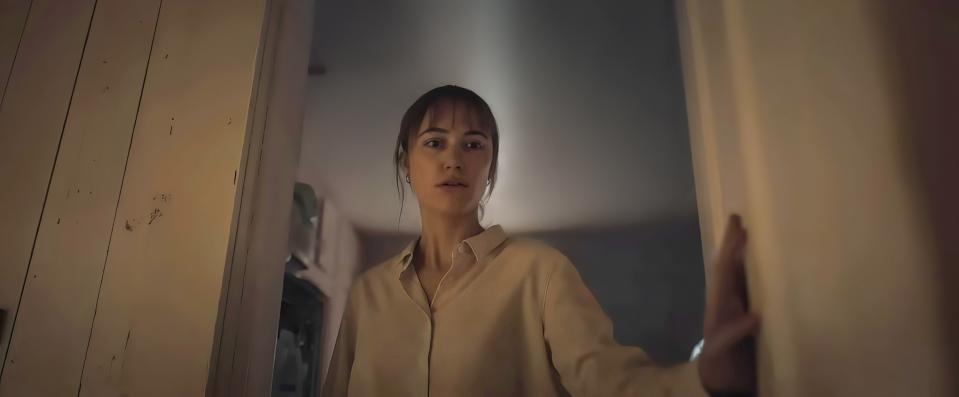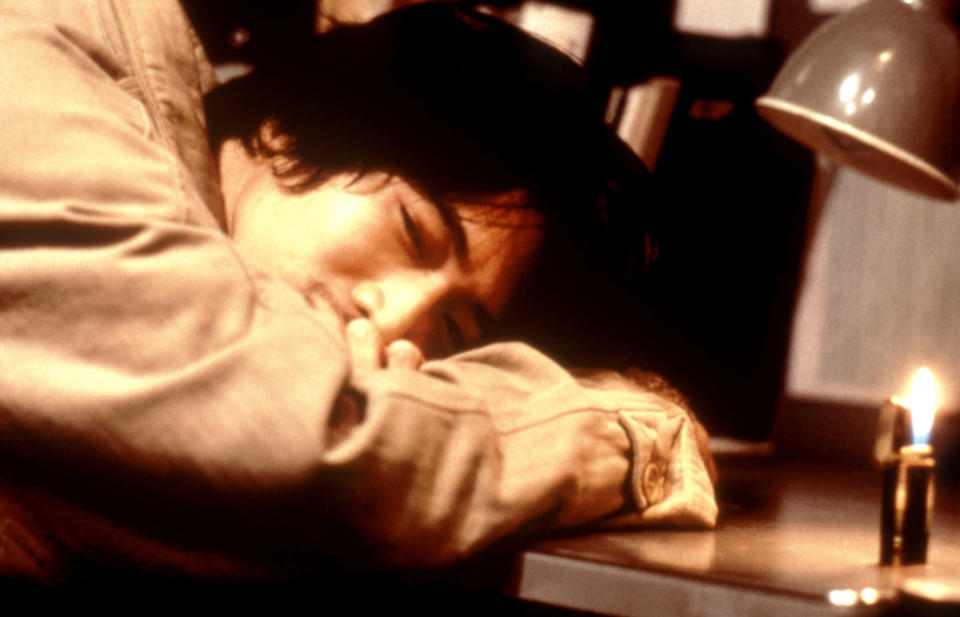Love ‘Longlegs’? Then the Japanese Serial Killer Thriller ‘Cure’ Is the Movie for You

Editor’s Note: The following story contains spoilers for “Longlegs” and “Cure.”
The oozy, hypnotic dread of “Longlegs” may be scaring up dreams of “Seven” and “The Silence of the Lambs” as a mid-‘90s-set thriller about the games between a serial killer and an FBI agent. But there’s another movie Osgood Perkins’ Nicolas Cage-starrer (now a record-smashing box office hit for Neon) shares a darker kinship with.
More from IndieWire
That’s Kiyoshi Kurosawa’s “Cure” from 1997, a gruesome serial killer tour de force the Japanese director himself was inspired by David Fincher’s “Seven” to make. “Cure,” a dripping-with-atmosphere philosophical crime thriller also about a seemingly psychic (and in this case amnesiac) killer a la Cage’s title character in “Longlegs,” stars the great Koji Yakusho as a Tokyo Metropolitan Police detective on the trail of a string of bizarre slayings that defy explanation. Each crime scene finds the killer close by, in a daze, their victims with an X carved into their chest. The perpetrators confess readily, but have no memory of their actions.
Similarly, in “Longlegs,” a spate of killings dating back to the 1970s and up to the film’s present day in 1993 leave inscrutable evidence. A family is brutally killed with household objects by the father, but there’s no forensic trace of an intrusion or that someone could’ve willed him into killing his wife and kids. All that’s left is a Satanic code signed Longlegs, which is, as we learn, the orchestration of Cage’s killer.
Asked about “Cure” and its parallels with “Longlegs,” Perkins told IndieWire, “I like it very much. I like it because it, the thing of it can be both sort of a procedural and a mystical, unexplainable, supernatural thing. And I think that blend is potentially potent. The great thing about the horror genre, of course, is that you can do everything. You can do anything. It’s the genre where there are the least rules and the most invitation to kind of go a little nuts.”

Though Perkins has admitted to not being a perennial horror movie watcher at all, he already has a Stephen King adaptation in the can for “Longlegs” distributor Neon, “The Monkey.” And another horror movie at the indie outfit he’s not ready to talk about yet.
Setting his movie in 1993, Perkins wants to put us in the frame of the classic serial killer screen heyday, movies like “The Silence of the Lambs,” which debuted in 1991 and went on to win five Oscars including Best Picture. But the mystical, in Perkins’ words, and sinister atmosphere of “Cure” — aided by cinematographer Tokush? Kikumura, who conjures hallucinatory, dream-state imagery as Koji’s character Takabe gets overcome and entranced by his assignment — is closer to “Longlegs.” That latest film goes to far more supernatural lengths to spin its chilling yarn about FBI agent Lee Harker (Maika Monroe) and her childhood link to Longlegs. Movies like “Seven” and “Silence of the Lambs” eschewed the paranormal entirely.
The same way that “Longlegs” threads the needle from troubles at home (Lee is haunted by a broken relationship with her religiously crazed, basically narcotized mother, who herself has a hypnotized pull to Longlegs), “Cure” also draws us further into Takabe’s private torment as the investigation escalates. At home, he’s got a schizophrenic wife (Anna Nakagawa) he’s losing his grip on. She’s frequently lost in a haze around the neighborhood. Takabe, meanwhile, is plagued by visions of his wife killing herself, and the guilt of that possibility entwines with his increasingly unsolvable casework.
His probe into the murders brings Takabe to a deranged, almost feral man named Mamiya (Masato Hagiwara), who suffers short-term memory loss but is always physically within arm’s length of the killings. While in custody, Mamiya flips the script to interrogate Takabe about his already fraught personal life. Similarly in “Longlegs,” Cage’s serial killer reveals his own perverse fascination with Lee’s inner world, having, it turns out, tried to make her his first victim after accosting her as a child. Which has then led to the current killing spree.

In “Cure,” Takabe discovers that Mamiya has mastered a kind of hypnosis that works by the power of suggestion, willing innocent people into committing murder. There’s a parallel here to how Longlegs’ Satanic machinations work, though both are best left unspoiled any further. Eventually, “Cure” unspools into a hallucinatory fever dream that leaves you on the hook about its characters’ fates. And the ending of “Longlegs” is no happy or certain one either.
Horror director Kurosawa is more known for his equally frightening 2001 techno-thriller “Pulse,” about college students coerced into suicide by a spectral presence inside their computers. That film used a classic ghost story framework to raise a cautionary tale about our addiction to technology. “Cure” has a less clear social message, instead content to wade in malevolent mood and existential malaise, its production design and cinematography as dank and soul-drained as the nastiest spaces of ceremonial killings in “Seven.”
Bong Joon Ho — who directed “Parasite” at Neon — named “Cure” one of his favorite movies of all time, if that’s any more motivation needed to check out the movie. Recent repertory screenings of “Cure” have sold out in New York City as social media users draw more attention to the film amid the ado around “Longlegs.” It’s also streaming on The Criterion Collection. (You can also buy Criterion Collection’s glorious restored Blu-ray edition, complete with behind-the-scenes extras!) If you’re looking to stay in the gloomy, hopeless, and pitch-black-evil headspace of “Longlegs,” “Cure” is the movie for you.
Best of IndieWire
Quentin Tarantino's Favorite Movies: 63 Films the Director Wants You to See
The 53 Best Sexy Movies of the 21st Century, from 'Spring Breakers' to 'X'
Sign up for Indiewire's Newsletter. For the latest news, follow us on Facebook, Twitter, and Instagram.
